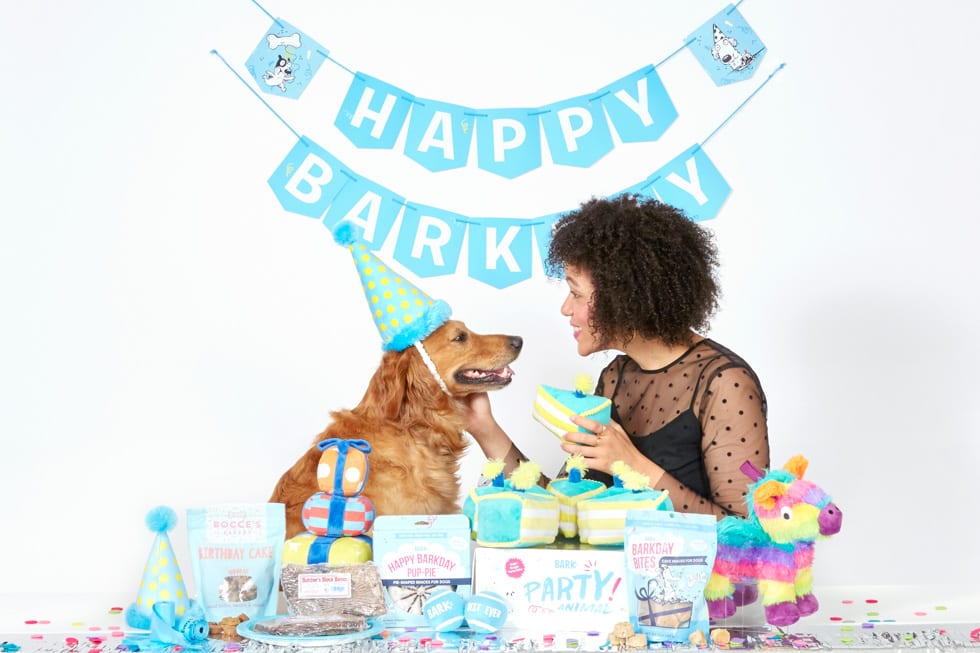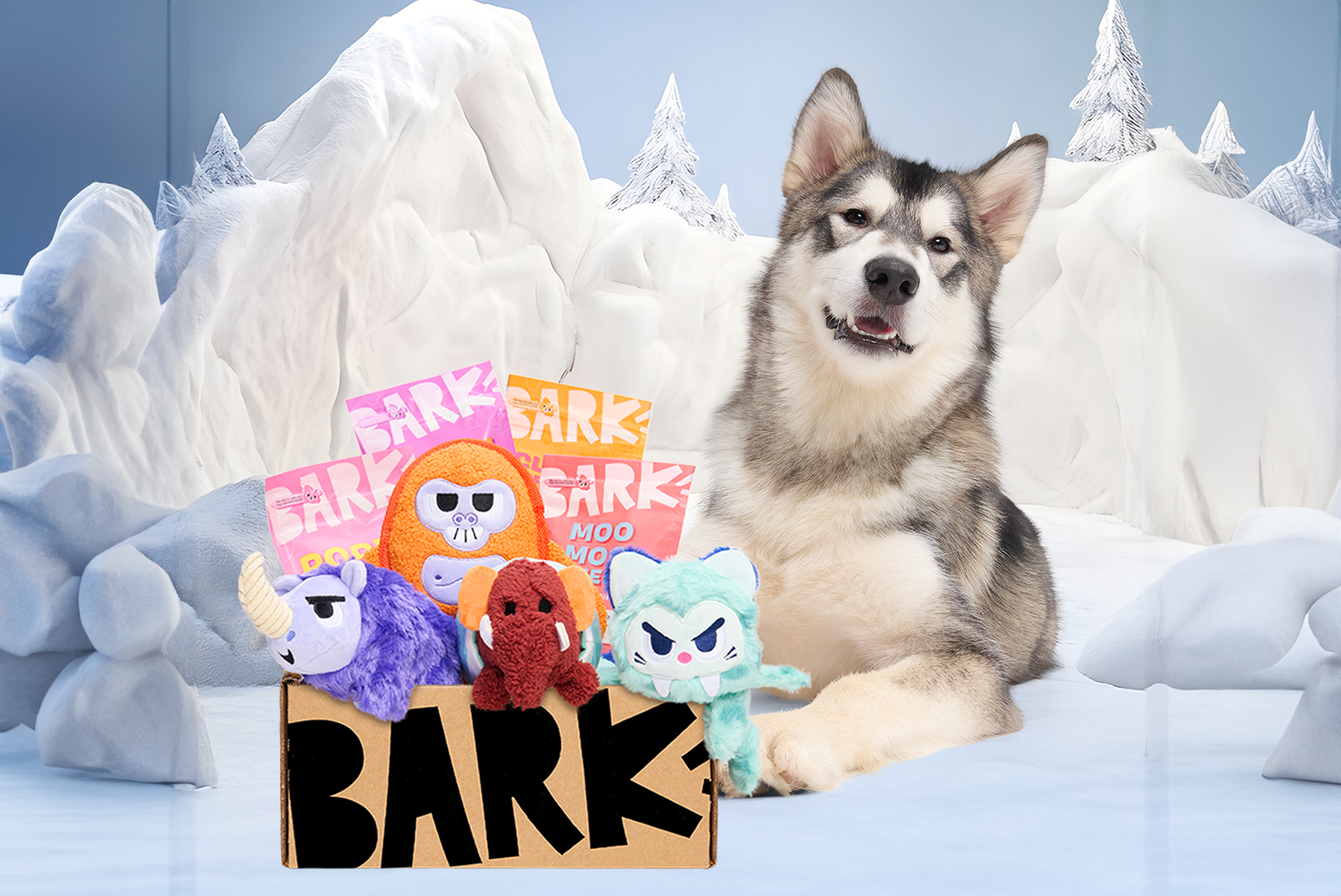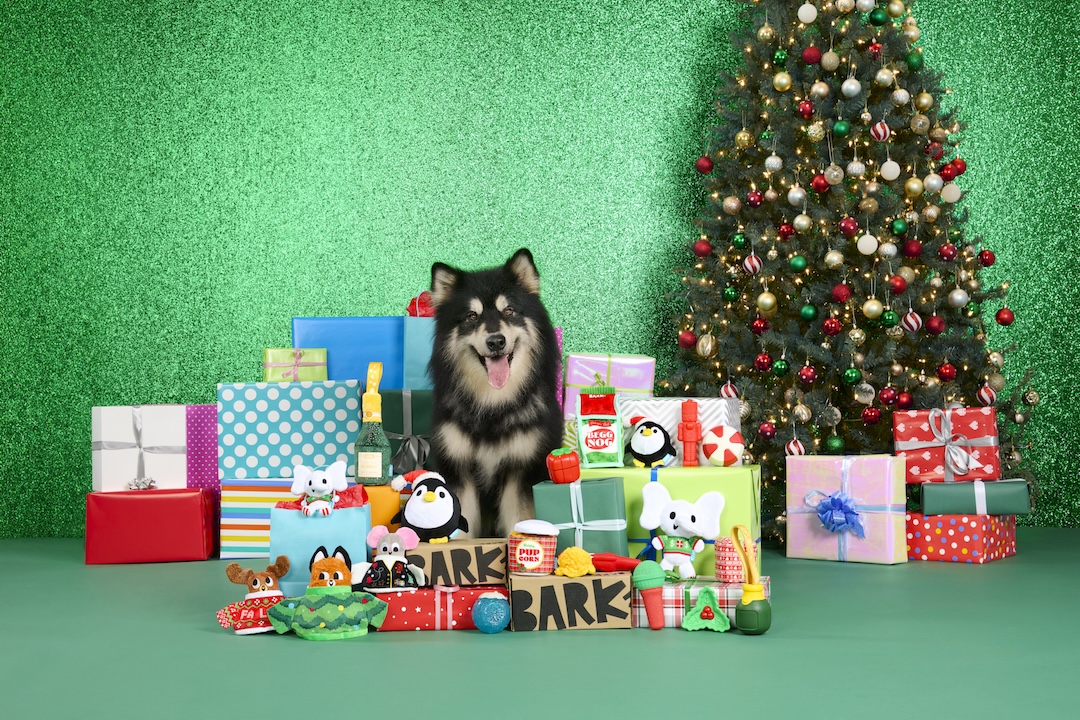For Pups With Short Attention Spans…
Golden retrievers are considered a medium sized dog, typically being stout and powerfully built. When full grown you can expect males to be between 65 and 75 pounds, and females between 55 and 65 pounds.
At some point, all petite yellow puppies grow up and lose their precious little rolls.
One minute, they’re napping, swaddled in your arms, no bigger than a loaf of bread. The next, they’re thigh-high blonde cannonballs capable of knocking down any unsuspecting bystanders between them and their favorite stick.
Goldies develop quickly and get fairly large, but just how big do golden retrievers get?
Individuals vary, just like their owners, but generally, healthy adult goldens are medium-sized.. Within the dog breed itself, sizes vary depending on location. While the English Cream Retriever (also known as the British Golden Retriever) and the American Golden Retriever have the same height and frame, the British Golden Retriever tends to weigh more.1
Fortunately, with some basic information, you can estimate how big your good boy (or girl) is going to get.
What Size Will Buddy Grow To?
In general, the golden retriever breed is generally viewed as medium-sized among dog breeds. As adults, they are stout and sport a powerfully muscular build.2
But right now, your blonde baby fits in the palms of your hands. You love your tiny golden boy, and you want to make sure you’re prepared for everything as he grows—you know he’s going to get exponentially larger and want him to have adequate space to play and flourish.
Not to mention, there are collars, carriers, and conches to think about. Buying accessories that are too big or too small might turn them into hand-me-downs for other pet pals.
How big will he get, exactly?
Exactly? There’s no telling.
But by looking at a few factors, such as age and gender, you can estimate if your ball of fluff is done growing or not and how big your goldie might get.


Measuring Males
If you’ve recently brought home a beautiful blonde boy, you’ll want to know how he’s going to develop. Generally, puppies have predictable time ranges for their different stages of growth:3
- 8 weeks – Unless the mama is a member of your family, you’ll probably take your baby home around this age. Although, adopting an older companion is also a noble and humane way to bring a good boy into your home. At 2 months old, your male golden retriever pup probably made the ride back to the house in a shoebox. While you wish you could just freeze time and keep him at 10 pounds (4.5kg) forever, this is as small as you’re going to see him. Luckily, he’ll always be as cute.
- Up to 6 months – Your male golden retriever puppy is going to grow rapidly until this age. His melt-your-heart, golden puppy-dog eyes are going to mature into those of an alert hunter. Folds of fat and loose neck skin will quickly give way to a filled-out frame. Make sure to feed him a diet of high-quality puppy food during this period to fuel his healthy development. He won’t be fully grown at half a year by any means, but his spurt will slow from a sprint to a jog. By 6 months, you can expect Bud to grow to roughly 45 pounds (20kg).
- 6 months to 2 years – This is the young adulthood of the canola-colored canine’s growth cycle. They really come into their own during this time, growing more in both physicality and mental maturity. He should experience less weight gain and more physical changes over his second year of life than his first. Nonetheless, golden boys grow into golden men, and after 24 months, they usually cap out at around 65–75 pounds (29–34kg). When measured at the shoulder, near the back of the head, Rover should stand about 2 feet (60cm) tall. He could achieve this height as early as 9 months, but his body will still develop, and his weight will climb regardless.
- After 2 years – While most individuals will reach adulthood and full maturity by 2, some goldens—particularly males—will continue to develop up until their 3rd birthday. While most of these changes should be to their features, some may still gain weight and grow in dimensions past 2.
Gauging Girls
Female goldens are a bit smaller in stature and weight than their male counterparts. They both follow a similar pattern of development, albeit with a few key differences:
- Birth to 2 years – Like blonde baby boys, female golden retriever puppies will develop rapidly over the first 6 months of their lives. They’ll add around 1.3 pounds (600g) to their frame weekly at first, slowing the pace past a half year as well. Golden females will reach about 55–65 pounds (25–29kg) on average by their 2nd birthday. They should stand about 20–22 inches (51–56cm) tall once they hit full maturity.3 Though smaller in size than their brothers, female goldens are still quite hefty, strong, and solid. Hold on tight to her leash! Even at a fraction of your weight, Goldie’s powerful legs are capable of yanking you around during sporadic spurts of energy.
- Beyond 2 years – Unlike boys, females should finish their physical development by 2. They will still be maturing mentally up until they reach 3 and beyond, but their bodies should be mostly filled out at 24 months.3 Of course, with female dogs, there is one more way that they can “fill out” their bodies and grow even more.
- During pregnancy – A belly full of brewing babies may not be totally evident at first, but once Goldie starts showing, the signs are impossible to ignore. Her body’s going to swell as the growing puppies develop inside her. There’s no telling exactly how big she’s going to get, as the size and number of her babies will vary from litter to litter. Generally, however, goldens give birth to about 5–10 babies per litter, with each of them weighing in the realm of a pound.4 She’ll likely gain more than just the weight of the puppies, however, as pregnancy is a taxing process that requires increased caloric intake and premium nutrition. Be sure your good girl has access to the right food to fuel her growing body and those cuddlemuffins baking in her belly.
Your blonde baby will generally grow to a predictable and, with the right preparation, manageable golden retriever size. Getting ready for a golden’s adulthood doesn’t have to be daunting when you have an idea of what to expect.


Growing Up Golden: Tips For Understanding and Aiding Your Dog’s Development
Goldens shouldn’t need too much help getting bigger; nature should take care of that for you. But being a bit more informed about the process means that you won’t be caught off-guard when Baxter starts ballooning in size. Keep these tidbits in mind as your baby’s hips broaden and coat darkens:
- Genetics are universal – Humans aren’t the only animals with a predisposition to take on the shape of their parents. Just like us, dogs’ development is influenced by the genes their mothers and fathers pass onto them. If you happen to know your pup’s heritage, then you can get a better sense of exactly what’s in store size-wise. While they won’t necessarily grow up to mirror their ancestors, it’s highly likely they won’t be too far off in terms of dimensions.3
- Nutrition is key – What a dog eats has major effects on their development. Underfeeding can stunt their growth, cause them to appear gaunt and malnourished, and prevent them from developing the powerful muscles they rely on for work and play. Overfeeding can have negative consequences as well. Becoming overweight is a major risk for dogs and can lead to health issues such as diabetes and reproductive disorders.5 Look into how much you should feed your golden at each stage of its life. Choose food that is rich in the essential vitamins and nutrients that your buddy needs to blossom. If you’d like a delectable suggestion, BARK makes top-notch food that’s specially catered towards golden retrievers and their specific nutritional requirements.
- Expect the unexpected – Speaking of the dangers of overfeeding, never underestimate just how big Goldie can get. Kai is a golden retriever happily living with a loving family near Edmonton. A few years ago, his current owners rescued him from negligent caretakers who overfed the poor boy until he was 175 pounds. If you’re keeping score at home, that’s 100 pounds heavier than the average healthy range for an adult male. His concerned rescuers put him on a diet, and he shed the excess baggage in a year flat.6 He’s healthy now, but Kai’s tale is a cautionary one. Goldens can get bigger and bigger and BIGGER. Don’t keep feeding them because they look hungry or are begging for treats, no matter how irresistible those puppy-dog eyes may be.
Each blonde baby’s journey of development is as unique and beautiful as they are. They grow fast, so remember to enjoy every moment. Go on long walks, cuddle on lazy mornings, and cultivate a loving relationship with your canine companion.
And when they get hungry, nourish them with nutrient-packed food that will help them grow strong and healthy.
Your dog and its needs will continue to change as they age, especially when they reach their twilight years. How long do golden retrievers live? Your canine best friend can expect to live a full 10 to 12 years.


Goldens Grow Strong With Nutritionally-Rich Food From BARK
No matter if your baby is the runt of the litter or growing to record sizes, all dogs need healthy food to fuel their proper development.
BARK makes food that’s scientifically formulated to meet golden retrievers’ nutritional needs. Shop our expertly formulated golden retriever food and get 25% off with code 25FOOD, plus free shipping!
Abundant omega fatty acids make Goldie golden, helping her skin and coat to take on the signature shine we associate with healthy retriever hair. Glucosamine builds dense, strong bones that will help Buddy barrel around the dog park without hurting his hips.
And when your retriever reaches their golden years, and the hips do become a concern, BARK makes mix-in supplements to strengthen what ails your best friend.
Trust BARK to provide your golden retriever with the right fuel to grow strong and live a long and healthy life.
Read more about golden retrievers, like 10 Golden Retriever Fun Facts and Common Golden Retriever Health Issues.
Sources:
- A – Z Animals. English vs American Golden Retriever: 5 Differences. https://a-z-animals.com/blog/english-vs-american-golden-retriever/
- American Kennel Club. Golden Retriever. https://www.akc.org/dog-breeds/golden-retriever/
- Golden Retriever Association of Western Australia. Golden Retriever Puppy Growth and Development. https://www.grcwa.com/puppies/new-puppy-now-what/251-puppy-growth
- National Library of Medicine. A model of puppy growth during the first three weeks. https://www.ncbi.nlm.nih.gov/pmc/articles/PMC7738731/
- National Library of Medicine. The growing problem of obesity in dogs and cats. https://pubmed.ncbi.nlm.nih.gov/16772464/
- Fox 10. Golden retriever that weighed 173 pounds looks like a new dog after shedding 100 pounds in a year. https://www.fox10phoenix.com/news/golden-retriever-that-weighed-173-pounds-looks-like-a-new-dog-after-shedding-100-pounds-in-a-year





